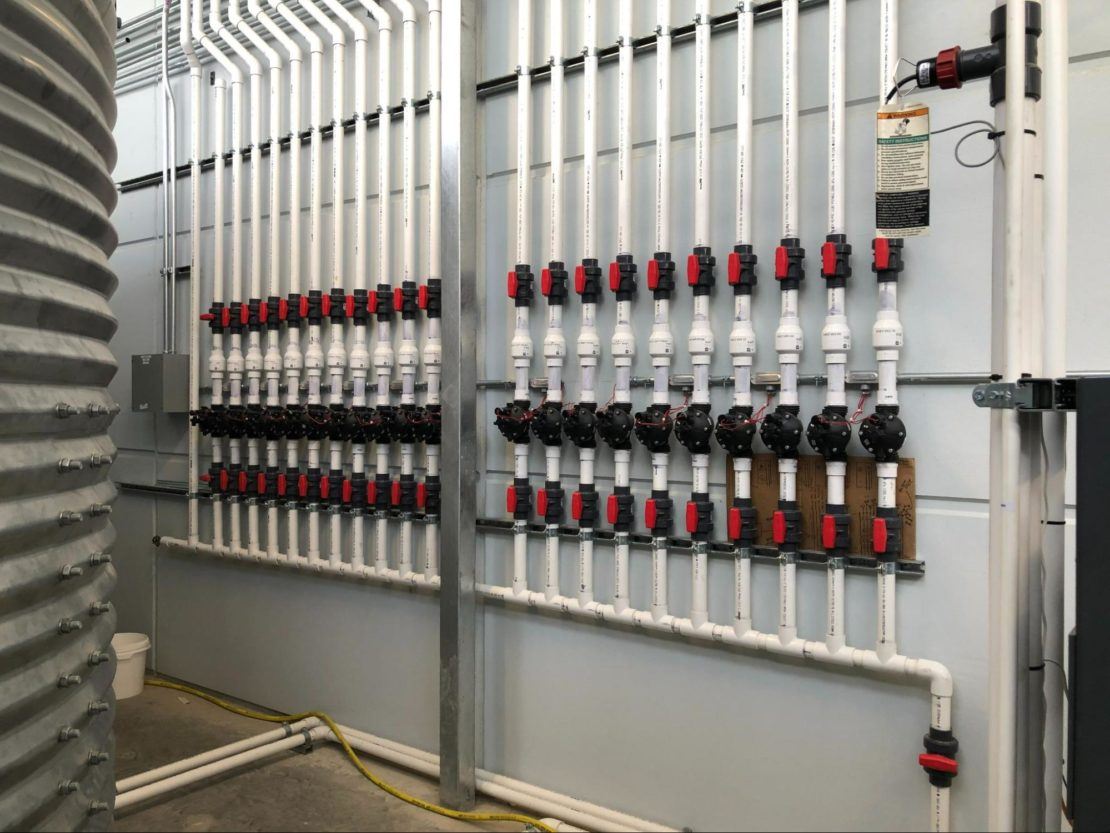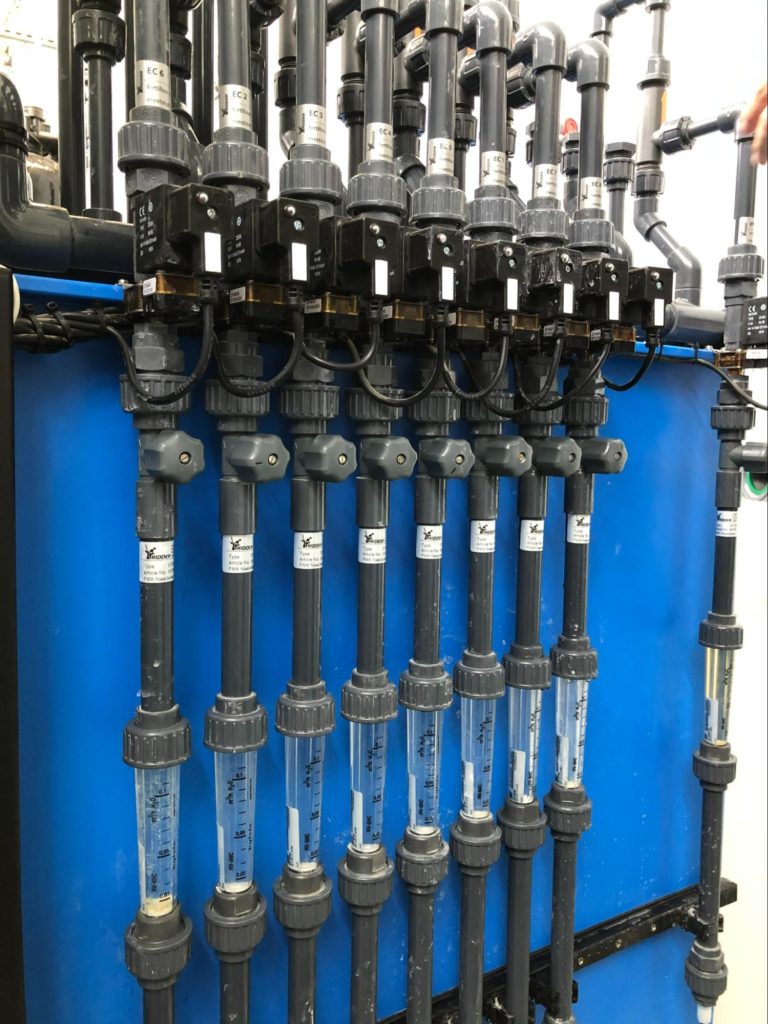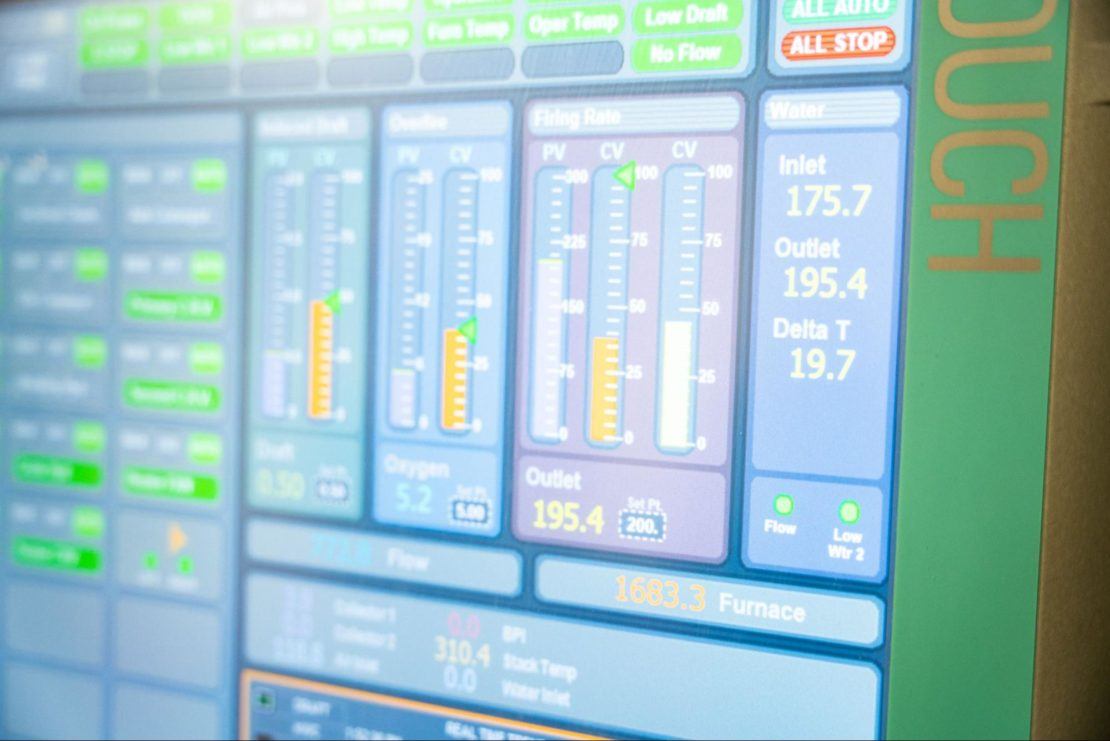Irrigation is easily one of the most important factors when it comes to greenhouse success. Too little water and your plants won’t thrive – too much, and they are subject to mold, root rot, or pest problems.
Don’t leave this vital growing aspect vulnerable to the weaknesses of subpar manual irrigation systems. Manual irrigation systems don’t allow for the personalization, monitoring, and exact climate control of more advanced irrigation systems. Your plant’s success hinges on proper moisture management – no matter the crop.
Sustainable Greenhouse Irrigation Systems
Our greenhouse irrigation systems aren’t just optimized to maximize your plant’s yield and quality. They also use sophisticated technology to ensure your growing operation is as energy and cost-efficient as possible.
With commercial and large-scale farms making up a large part of worldwide water usage, responsible and sustainable irrigation practices are better for the environment as well as your wallet.


Irrigation And Nutrient Distribution
Irrigation does more than supply needed water to plants. It is also a vital part of nutrient distribution for crops. Proper fertilization can be a considerable hurdle when launching and managing a growing operation.
Automated systems take care of perfectly balancing and evenly distributing soil nutrients. These systems can be linked to fertilizer units with multiple fertilizer concentrates. PH levels, sanitizer, and various minerals are monitored and distributed via irrigation systems to provide perfect, hands-off fertilization with little effort on your part.
Water Filtration and Treatment
The last thing you want is low-quality water lowering your plant growth or end product quality. Efficient greenhouse irrigation systems often utilize water treatment and extremely efficient filtering systems before running water through to your plants. These systems utilize the following methods to ensure your plants receive quality hydration with no harmful elements that could harm growth:
- Carbon filters
- Sediment filters
- Reverse osmosis
All the watering equipment in the world won’t help you if you’re pumping in low-quality water. Prospiant will work with you to determine what filtration or treatment is needed depending on your water source and quality.
Our Irrigation Products
Personalized, automated irrigation systems offer perfect moisture levels at all times. Even the most sophisticated drip irrigation systems can’t compare to fully automated greenhouse environmental control technology.
All of our irrigation systems are compatible with state-of-the-art sensors and Prospiant’s greenhouse environmental controls. This allows our clients to monitor and optimize moisture, humidity, soil quality, temperature control, and many other elements in conjunction with each other.
Why Prospiant?
Our greenhouse environmental control systems allow the most efficient and effective watering methods possible. Sophisticated environmental sensors take into account overall moisture levels, humidity, nutrient delivery, and other factors in order to provide the exact hydration your plants need. Prospiant takes the guesswork out of growing and lets you enjoy optimized growing conditions effortlessly.

FAQs
Which Irrigation Method Is Best For Greenhouses?
Drip irrigation offers growers the most significant benefit compared to other water delivery methods. The drip irrigation system uses pulse irrigation events instead of a constant water supply. This means a gentle flow of water is introduced to the soil itself until it reaches the desired moisture level. When attached to an automated greenhouse environmental control sensor, the moment the perfect moisture level is reached, the pulse ends – guaranteeing perfect hydration for your growing material.
The greater efficiency of this method means water isn’t wasted or overused. Not only does this benefit your plants and the environment, but it also benefits your bottom line. Lower water bills are an essential part of running a profitable growing operation.
What Is The Best Way To Water A Greenhouse?
The right greenhouse irrigation method for most growing operations is overwhelming a drip irrigation system. Drip irrigation is preferred in part because it adds moisture directly to the growing medium, avoiding the leaves and stems entirely. Plants get directly soaked in water when using a manual, sprinkler, misting system, or other irrigation methods.
Not only is this a waste of water, but damp plants are also at an increased risk of diseases and rot. Wet foliage is vulnerable to a wide variety of health issues. This precaution is especially important when growing sensitive crops, like cannabis, that are particularly susceptible to mildew issues.
How Do You Irrigate A Small Greenhouse?
No matter the size of your greenhouse or growing operation, drip irrigation systems offer the most significant benefit to you and your plants. Some smaller growing operations can be tempted to use manual methods or a simple water weeper hose to manage moisture levels. Hand watering supplies and a garden hose may be adequate to hydrate potted plants but any size greenhouse benefits from a complete irrigation system.
High initial investment and labor costs can tempt growers to skimp on irrigation setups. However, long term, the best greenhouse watering system is still the drip method. Drip systems often pay for themselves with superior efficiency, crop quality, and cost-effectiveness.
Why Is Irrigation Important?
Maintaining proper moisture levels is a key part of growing anything successfully. Under watered plants are prone to:
- Wilting – A lack of adequate water can cause wilting, curling, yellowing, or generally failing to grow properly. If a plant has gone from healthy and thriving to limp and sad, underwatering may be to blame.
- Plant Death – Chronically underwatered plants will simply die if left without water long enough.
Overwatered plants are at risk of:
- Reduced Oxygen – When too much water floods the soil, roots are “drowned.” In essence, this means they are unable to access and absorb enough oxygen. Without adequate oxygen, roots die, followed by the plant itself.
- Root Rot – Root rot is the generic name given to diseases that plague plants grown in over-watered soil. Most of these diseases are caused by harmful fungi that thrive in wet planting material and leave a terrible smell behind. They can quickly cause plants to wilt and, if untreated, die.
- Fungus Gnats – From hobby gardeners to large growing operations – anyone can have plants plagued by fungus gnats. These stubborn pests lay eggs in the soil, and their larvae can often kill plants by eating and damaging root structures.
- Stunted Growth – Even if plants survive an over-watered environment, they won’t flourish and grow to their full potential. If your plants aren’t living up to potential yields, soil moisture levels may be the right place to start investigating.